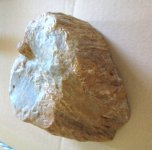Bejay
Bronze Member
- Mar 10, 2014
- 1,026
- 2,530
- Detector(s) used
-
Whites GMT
Garret fully underwater
- Primary Interest:
- Prospecting
The concept of making a valuable mineral discovery is often confusing. Finding gold, and locating a claim will secure your mineral interest; considered to be "possessory interest" securing it from others, but it does not defend it as a "valid discovery" against the interests of the United States. To prove a "valid discovery" a miner would have to "prove up" on the claim and do a "marketability test" that meets the "prudent man concept". So in simple terms: finding some gold and laying claim to it does not constitute a "valid discovery", but merely reserves your location for your own prospecting and exploration.
The US Supreme Court has had many rulings that dictate that "Staking a Mining Claim" is simply a step in a process; and is part of the prospect, locate, explore, discover, mine/patent process. Such court decisions play a very important role in the fight to secure the rights of miners to "mine"..... when the issue of "takings" is used as the argument to support miners rights to mine.
Supreme Court Cases to study are:
Cameron v. United States and.............. C.A. Davis et al., Appellants, v. Neal Nelson, State Director, Bureau of Land Management.
Bejay
The US Supreme Court has had many rulings that dictate that "Staking a Mining Claim" is simply a step in a process; and is part of the prospect, locate, explore, discover, mine/patent process. Such court decisions play a very important role in the fight to secure the rights of miners to "mine"..... when the issue of "takings" is used as the argument to support miners rights to mine.
Supreme Court Cases to study are:
Cameron v. United States and.............. C.A. Davis et al., Appellants, v. Neal Nelson, State Director, Bureau of Land Management.
Bejay
Amazon Forum Fav 👍
Upvote
0





